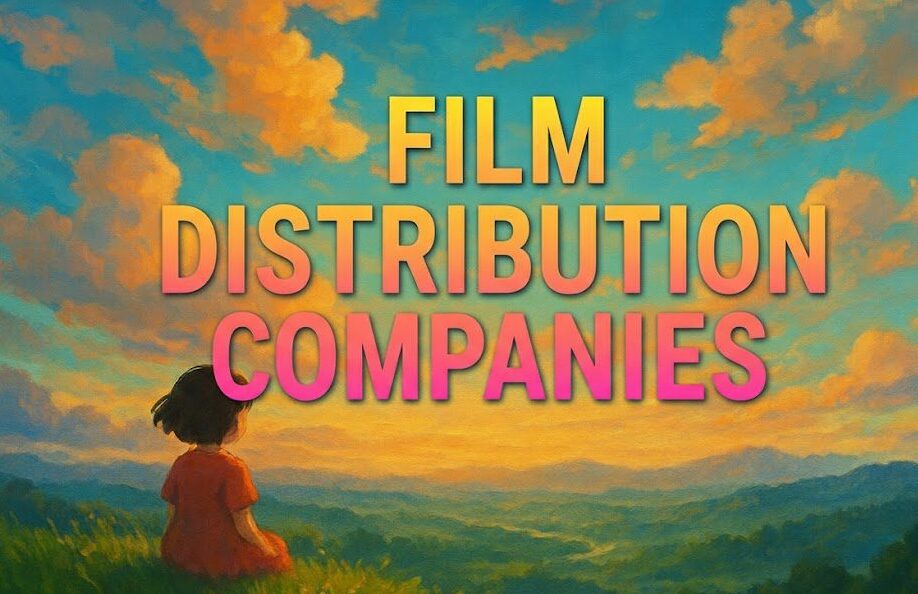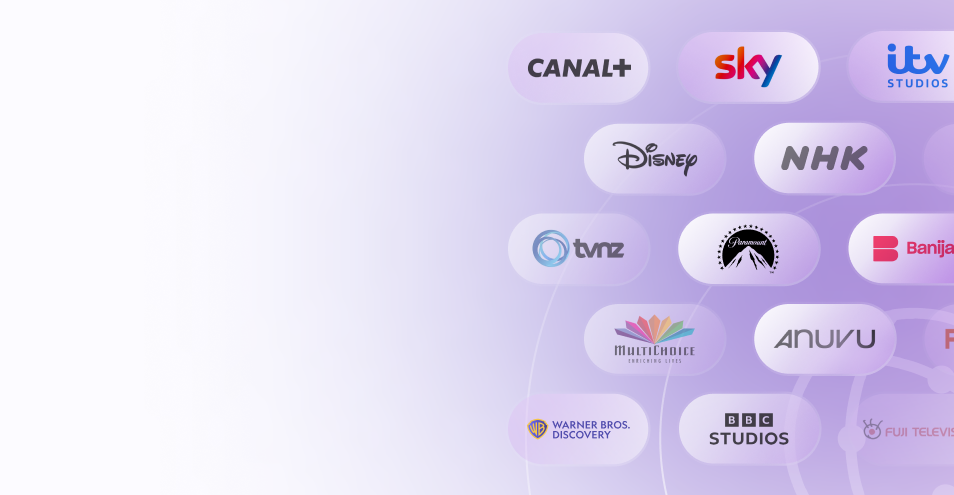Introduction
Do you have a library of older films or TV shows just sitting there?
You might be sitting on a goldmine! Many content creators and rights holders don’t realize the amazing chance they have to sell back catalog assets.
With streaming booming and new channels popping up all the time, there’s a big hunger for great content, no matter its age. This guide will walk you through how to get your film back catalog ready, find the right buyers, and make smart deals. Let’s unlock that hidden value!
Table of content
Key Takeaways
| Aspect | Key Insight |
|---|---|
| Understanding Value | Your back catalog has significant, often untapped, monetary and audience reach potential in today’s diverse media landscape. |
| Preparation is Crucial | Proper valuation, clear rights, quality masters, and organized metadata are essential before you try to sell your back catalog. |
| Finding Buyers | A mix of traditional distributors, new streaming platforms, and niche channels are actively seeking back catalog content. Platforms like Vitrina can connect you. |
| Deal Smart | Understand the difference between licensing and selling, and be ready to negotiate terms that benefit you. |
| Market Trends | The rise of FAST channels and specialized VOD services is creating new opportunities to sell back catalog titles. |
Is Your Old Content Collecting Dust?

Unlocking the Value in Your Film Back Catalog
Your collection of older films and TV shows is more than just past projects; it’s a valuable asset. Understanding what a back catalog is and why it’s sought after is the first step to making money from it.
What Exactly is a Film “Back Catalog”?
A film back catalog, or media library, refers to all the films, TV series, documentaries, or other video content that a production company, distributor, or rights holder owns, which are no longer in their initial release window.
Think of them as classic movies or older TV shows that still have appeal. These legacy assets can include everything from blockbuster hits of yesteryear to timeless indie darlings.
Why Consider Selling Your Film Back Catalog Now?
The entertainment world is always hungry for content. Streaming services, new TV channels, and online platforms need a constant supply of films and shows to keep viewers interested.
This high demand makes it a great time to sell back catalog content. You can find new audiences and earn money from films that might otherwise be forgotten.
The rise of FAST channels (Free Ad-supported Streaming TV) has particularly opened up new avenues for older content.
The Tangible Benefits of Monetizing Older Content
Selling or licensing your back catalog offers several great benefits.
The most obvious is financial gain – turning dormant assets into revenue. It also gives your films a new lease on life, reaching audiences who may have missed them the first time around.
This can even revive interest in your brand or older intellectual property, potentially leading to remakes, sequels, or other opportunities. It’s a smart way to maximize the long-term value of your creative work.
| Revenue Stream | Description | Potential |
|---|---|---|
| SVOD Licensing | Selling rights to subscription-based services like Netflix or Hulu. | High, for popular or well-curated catalogs. |
| AVOD/FAST Channels | Licensing to ad-supported free streaming services. | Growing rapidly, good for broad appeal content. |
| TV Broadcast | Selling rights to traditional or cable TV channels. | Steady, especially for specific genres. |
| Transactional VOD (TVOD) | Pay-per-view or download-to-own platforms. | Moderate, title-dependent. |
- Generate new income from existing assets.
- Expand your audience reach globally.
- Reduce storage and management costs for physical assets if sold.
- Reinvest earnings into new productions.
Getting Your Ducks in a Row: Preparing to Sell Back Catalog Treasures
Before you can successfully sell back catalog films, you need to prepare them properly.
This means knowing their worth, having all your paperwork and materials in order, and making sure they look their best. Good preparation can make a huge difference in the price you get and how smoothly the sale goes.
How Do You Accurately Value Your Film Back Catalog?
Valuing a film catalog isn’t an exact science, but you can get a good idea.
Consider factors like the genre (some genres have longer shelf lives), any famous cast or directors, past box office performance or TV ratings, the rights available (e.g., global vs. specific territories, all rights vs. limited), and the technical quality of the masters.
Awards, critical acclaim, and whether the themes are still relevant today also play a part. Sometimes, getting a professional content valuation can be a good investment.
Essential Preparations: Metadata, Legal Clearances, and Master Materials
This is super important! Buyers will want to see a clean chain of title, proving you own the rights you’re selling.
Make sure all music and talent clearances are in order. Your metadata – information like synopses, cast/crew lists, genre, keywords, and available languages – must be accurate and complete.
High-quality master materials (like digital files or original film negatives) are also a must. The better organized and documented your catalog is, the easier it is to sell.
Polishing Your Gems: Restoration, Remastering, and Presentation
For older films, consider if restoration or remastering to HD or even 4K could increase their value.
A film that looks and sounds great will be more attractive to buyers, especially for platforms that need high-definition content. Even creating new artwork or a compelling sales pitch deck can make your catalog stand out when you decide to sell back catalog titles.
| Preparation Checklist Item | Why It’s Important |
|---|---|
| Chain of Title Verification | Proves legal ownership and right to sell. |
| Music & Talent Clearances | Ensures no future legal issues for the buyer. |
| Comprehensive Metadata | Helps buyers understand and market the content. |
| High-Quality Master Files | Essential for distribution on modern platforms. |
| Promotional Materials | Artwork, trailers, synopses to attract buyers. |
- Not having clear rights documentation.
- Overvaluing content based on sentiment rather than market realities.
- Poor quality master materials or incomplete metadata.
- Not understanding the current market demand for specific types of content.
Finding Eager Buyers: Connecting Your Back Catalog with Global Demand
Once your catalog is prepped and valued, it’s time to find the right home for it.
The market to sell back catalog content is diverse, with many types of buyers looking for different kinds of films and shows. Knowing where to look and how to connect is key.
Who is Buying? Identifying Potential Global Distributors and Platforms
Buyers range from big global streaming services (like Netflix, Amazon Prime Video, Disney+) to smaller, niche VOD platforms that focus on specific genres (e.g., horror, documentaries, classic cinema).
Traditional TV networks and cable channels worldwide still acquire back catalog content. There are also specialized film distributors who focus on acquiring and reselling library content. Don’t forget emerging markets where demand for international content is growing.
How Vitrina Can Help You Sell Your Back Catalog
Navigating the global content marketplace can be complex. That’s where platforms like Vitrina come in.
Vitrina acts as a global B2B marketplace, connecting content sellers with buyers from around the world. By listing your back catalog on Vitrina, you can increase its visibility to a wide range of potential international buyers, including streamers, broadcasters, and distributors.
The platform often provides tools and data to help you understand market trends and find the most suitable partners for your content, making the process to sell back catalog assets more efficient.
Smart Strategies for Reaching Niche Markets and Audiences
If your catalog contains specialized content, like cult classics, foreign language films, or specific genre movies (e.g., arthouse, LGBTQ+), look for distributors or platforms that cater to those niche audiences.
These buyers often deeply understand their viewers and can give your films a dedicated following. Attending film markets (even virtual ones) and networking can also uncover these opportunities.
| Buyer Type | Typical Content Interest | Reach |
|---|---|---|
| Major Streaming Platforms | Broad appeal, well-known titles, some niche. | Global / Large Regional |
| Niche Streaming Services | Specific genres, cult films, documentaries. | Targeted Global / Regional |
| FAST Channel Operators | Episodic content, movies for thematic channels. | Growing, often US/Europe focused |
| Traditional TV Broadcasters | Content fitting specific time slots or channel themes. | National / Local |
| Specialized Distributors | All types, often with expertise in specific rights or territories. | Varied |
- Create a detailed sales deck for your catalog.
- Attend industry markets and networking events.
- Research potential buyers and tailor your pitch to their needs.
- Use online B2B platforms to list your content.
Unlock Your Catalog's Global Potential?

Making the Deal: Navigating Sales and Distribution Agreements
You’ve found an interested buyer for your film back catalog – fantastic!
Now comes the crucial stage of negotiating the deal and signing the agreement. Understanding the terms is vital to ensure a fair and beneficial outcome when you sell back catalog rights.
Licensing vs. Selling: What’s the Best Path for Your Back Catalog?
You generally have two main options: licensing or an outright sale.
Licensing means you grant specific rights to a buyer for a certain period and for specific territories (e.g., SVOD rights for North America for 2 years).
You retain ownership and can license other rights or the same rights elsewhere after the term expires. An outright sale means you transfer ownership of the film(s) to the buyer, usually for a lump sum. This is less common for entire catalogs unless it’s a major acquisition.
Most deals involve licensing specific bundles of rights.
Key Terms to Scrutinize in Back Catalog Distribution Agreements
Pay close attention to:
Rights Granted: What specific rights are they acquiring (e.g., SVOD, AVOD, TV, theatrical)?
Territory: Which countries or regions are covered?
Term: How long will the agreement last?
Financials: Is it a flat license fee, a revenue share, or a minimum guarantee against revenue share? What are the payment terms?
Deliverables: What materials do you need to provide, and by when?
Exclusivity: Are the rights exclusive to this buyer, or can you license to others in the same window/territory?
Top Tips for a Smooth Negotiation and Successful Sale
Be prepared. Know your catalog’s strengths and your minimum acceptable terms before you start.
It’s highly recommended to have a media lawyer review any agreement before you sign. Don’t be afraid to negotiate, but also be realistic.
Clear communication and a willingness to find common ground often lead to the best outcomes when you sell back catalog assets.
| Agreement Clause | What to Watch For |
|---|---|
| Scope of Rights | Ensure it’s clearly defined and not overly broad unless compensated. |
| Payment Schedule | Clarity on when and how you get paid. Milestones for delivery. |
| Reporting Requirements | If revenue share, how often will you get reports and access to data? |
| Marketing Commitment | Will the buyer actively promote the content? |
| Renewal/Termination | Conditions for renewing the deal or ending it. |
- Clearly define your goals before starting negotiations.
- Bundle titles strategically for higher perceived value.
- Always get legal advice from an expert in entertainment law.
- Maintain good relationships, even if a deal doesn’t close.
Conclusion
Your film and TV back catalog is a valuable asset waiting to be rediscovered.
In today’s content-hungry world, there are more opportunities than ever to sell back catalog titles and bring them to new audiences globally. By understanding its worth, preparing it diligently, finding the right partners, and negotiating smart deals, you can unlock significant revenue and give your creative work a vibrant new life.
Don’t let your cinematic treasures gather dust!
Ready to explore how Vitrina can help you monetize your content library? Sign up today and connect with a world of buyers!
Frequently Asked Questions
It varies a lot! Selling individual titles or small packages might take a few weeks to a few months. Selling a large, valuable catalog could take much longer, even a year or more, due to due diligence and complex negotiations. Using a platform can speed up discovery.
You can definitely sell or license individual titles or smaller, curated packages from your back catalog. Many buyers are looking for specific types of content rather than entire libraries. This allows you to tailor offerings to different buyers.
Common challenges include unclear rights (chain of title issues), poor quality master materials, unrealistic valuation, finding the right buyers, and navigating complex legal agreements. Proper preparation helps overcome many of these.
Vitrinahelps by providing a centralized marketplace where your catalog can be discovered by a global network of verified buyers. It offers tools for showcasing your content effectively, including screeners and metadata management, and can facilitate initial connections, streamlining your efforts to sell back catalog films and TV shows.




































